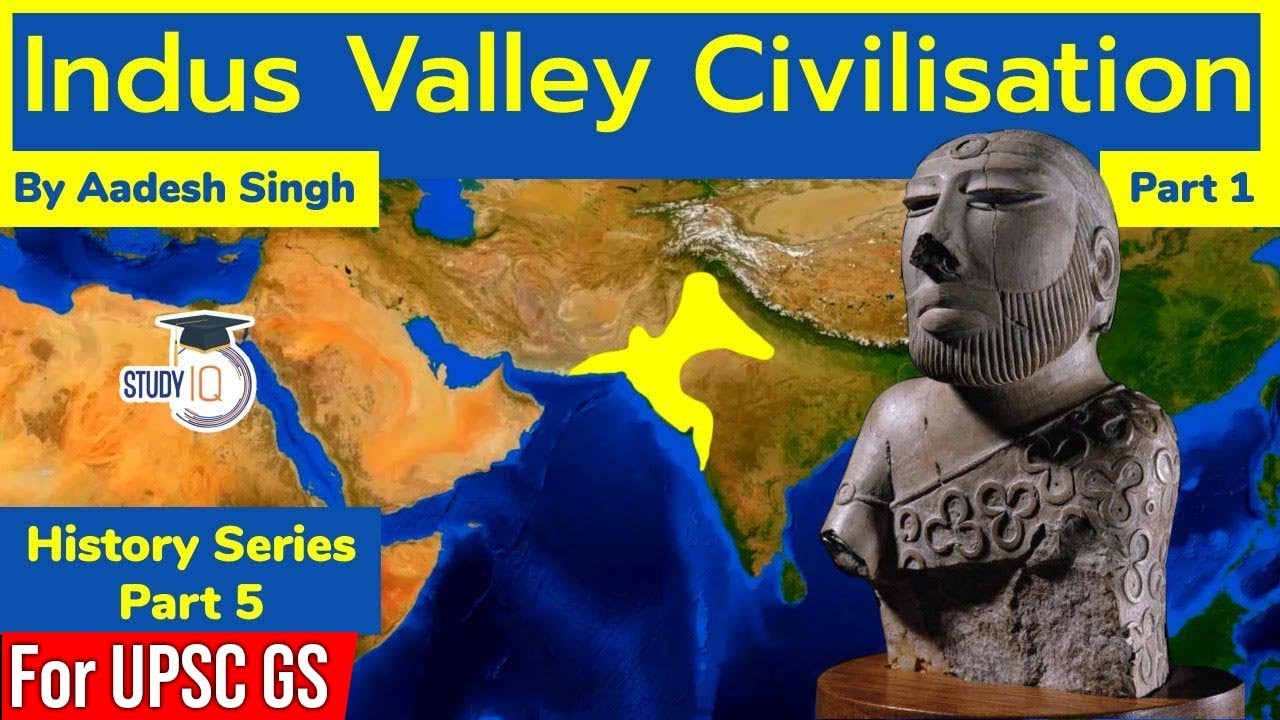PERADABAN SUNGAI INDUS : Mahenjo Daro dan Harappa
Summary
TLDRThe video explores the ancient Indus Valley civilization, highlighting the advanced urban planning of its cities, Mohenjo-Daro and Harappa. Established around 2800 BCE, this civilization thrived through sophisticated agricultural practices and an intricate drainage system that prevented flooding. Their cities featured grid-like layouts, public buildings, and homes equipped with ventilation, indicating a high standard of living. The absence of a rigid caste system is suggested as a factor in their progress. However, by 1810 CE, these cities were abandoned due to various disasters, including flooding and invasions, leading to the decline of this remarkable civilization.
Takeaways
- 🏛️ Ancient India is often associated with figures like Emperor Ashoka and epic tales like the Mahabharata, but its history starts much earlier with the Indus Valley Civilization.
- 🏙️ The Indus Valley Civilization thrived between 2800 BCE and 1810 BCE, centered around the cities of Mohenjo-Daro and Harappa.
- 🌾 The inhabitants of the Indus Valley excelled in agriculture, effectively utilizing local resources and developing advanced irrigation systems.
- 🛠️ The cities showcased remarkable urban planning, featuring a grid-like layout with organized streets, public buildings, and sophisticated drainage systems.
- 💧 Their advanced drainage systems included vertical pipes and covered sewers, reflecting a strong understanding of water management.
- 📏 Evidence of standardized weights, measures, and seals indicates a highly organized and trade-oriented society.
- 🔧 The civilization was proficient in metalworking, utilizing materials like copper, bronze, and tin.
- 👥 The societal structure appeared egalitarian, lacking a rigid caste system, which may have contributed to its rapid advancements.
- 📉 By around 1910 BCE, the population began to decline as people migrated to smaller villages in the Himalayas.
- ⚠️ The decline of the Indus Valley Civilization was influenced by natural disasters, deforestation, and invasions, likely by Aryan tribes.
Q & A
What is the time frame of the Indus Valley Civilization?
-The Indus Valley Civilization thrived from around 2800 BCE to 1810 BCE.
Which major cities were central to the Indus Valley Civilization?
-The major cities central to the Indus Valley Civilization were Mohenjo-Daro and Harappa.
Who were the primary inhabitants of the Indus Valley?
-The primary inhabitants were the Dravidians, an indigenous group of India.
What were the key features of urban planning in Mohenjo-Daro and Harappa?
-Key features included a grid layout for streets, advanced drainage systems, and public buildings for communal use.
How did the people of the Indus Valley manage water resources?
-They developed a sophisticated drainage system that effectively managed waste and prevented flooding during monsoons.
What role did agriculture play in the Indus Valley Civilization?
-Agriculture was the primary occupation, and the people efficiently utilized the fertile land of the Indus Valley for crop production.
What technological advancements did the Indus Valley people achieve?
-They developed standardized weights and measures, intricate seals, and metallurgy techniques for smelting copper, bronze, and tin.
Was there a caste system in the Indus Valley Civilization?
-There is no evidence of a caste system in the Indus Valley Civilization, which may have facilitated its rapid development.
What factors contributed to the decline of the Indus Valley Civilization?
-Factors included natural disasters, deforestation, soil erosion, and invasions by foreign tribes, particularly the Aryans.
What legacy did the Indus Valley Civilization leave behind?
-The civilization left a significant legacy in urban planning, agricultural practices, and technological innovation, influencing future cultures in the region.
Outlines

Dieser Bereich ist nur für Premium-Benutzer verfügbar. Bitte führen Sie ein Upgrade durch, um auf diesen Abschnitt zuzugreifen.
Upgrade durchführenMindmap

Dieser Bereich ist nur für Premium-Benutzer verfügbar. Bitte führen Sie ein Upgrade durch, um auf diesen Abschnitt zuzugreifen.
Upgrade durchführenKeywords

Dieser Bereich ist nur für Premium-Benutzer verfügbar. Bitte führen Sie ein Upgrade durch, um auf diesen Abschnitt zuzugreifen.
Upgrade durchführenHighlights

Dieser Bereich ist nur für Premium-Benutzer verfügbar. Bitte führen Sie ein Upgrade durch, um auf diesen Abschnitt zuzugreifen.
Upgrade durchführenTranscripts

Dieser Bereich ist nur für Premium-Benutzer verfügbar. Bitte führen Sie ein Upgrade durch, um auf diesen Abschnitt zuzugreifen.
Upgrade durchführenWeitere ähnliche Videos ansehen

Rise and Fall of Indus Valley Civilization

Indus Valley Civilization Part 1 - Ancient India History for UPSC | Harappa Civilization

Documentary # 16: Indus Valley Civilization | A Short Documentary

Peradaban India Kuno di Lembah Sungai Indus. Kota Mohenjodaro dan Harappa Sudah Maju Bangett!!

Mohenjo Daro 101 | National Geographic

Peradaban Lembah Sungai Indus dan Lembah Sungai Kuning
5.0 / 5 (0 votes)
